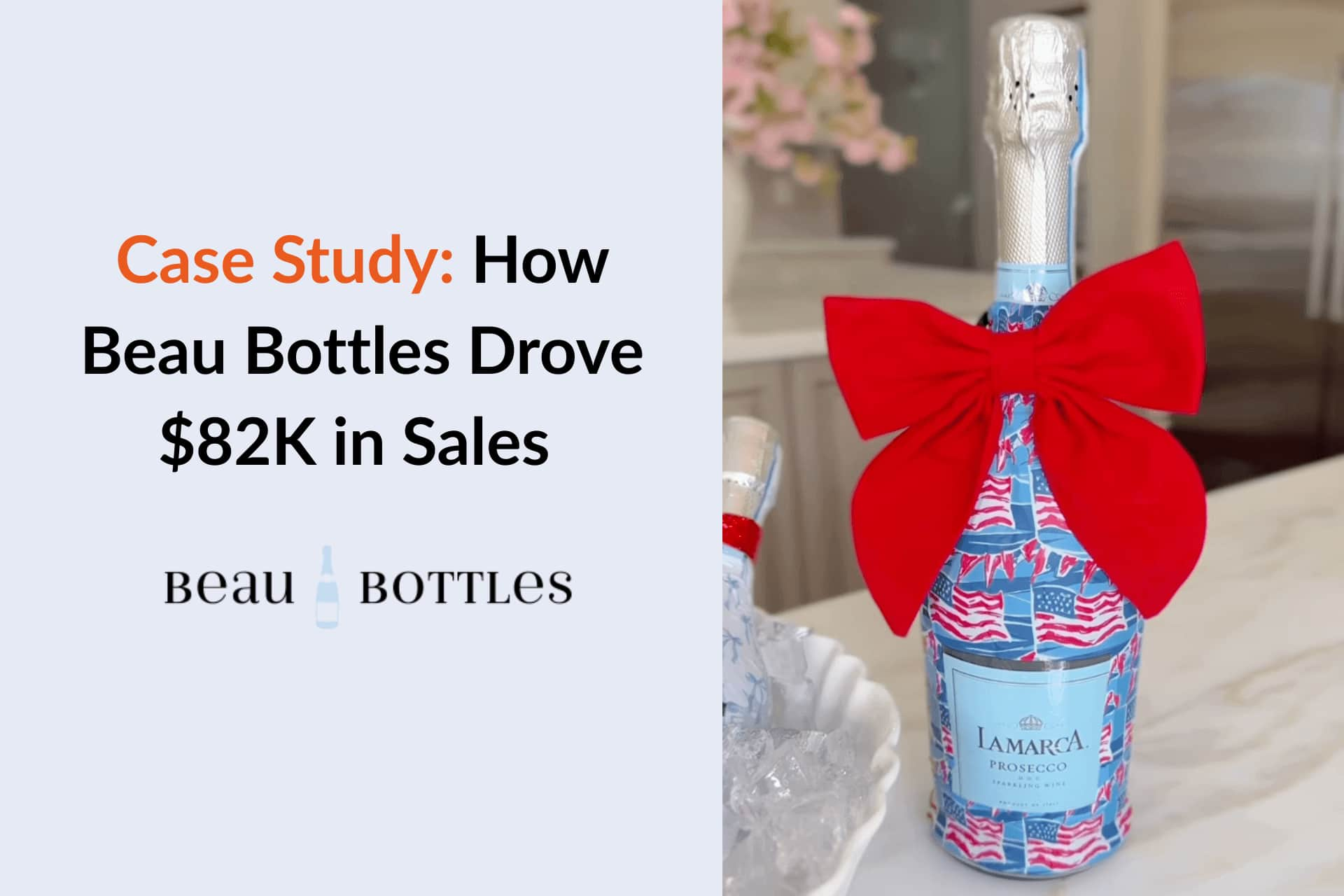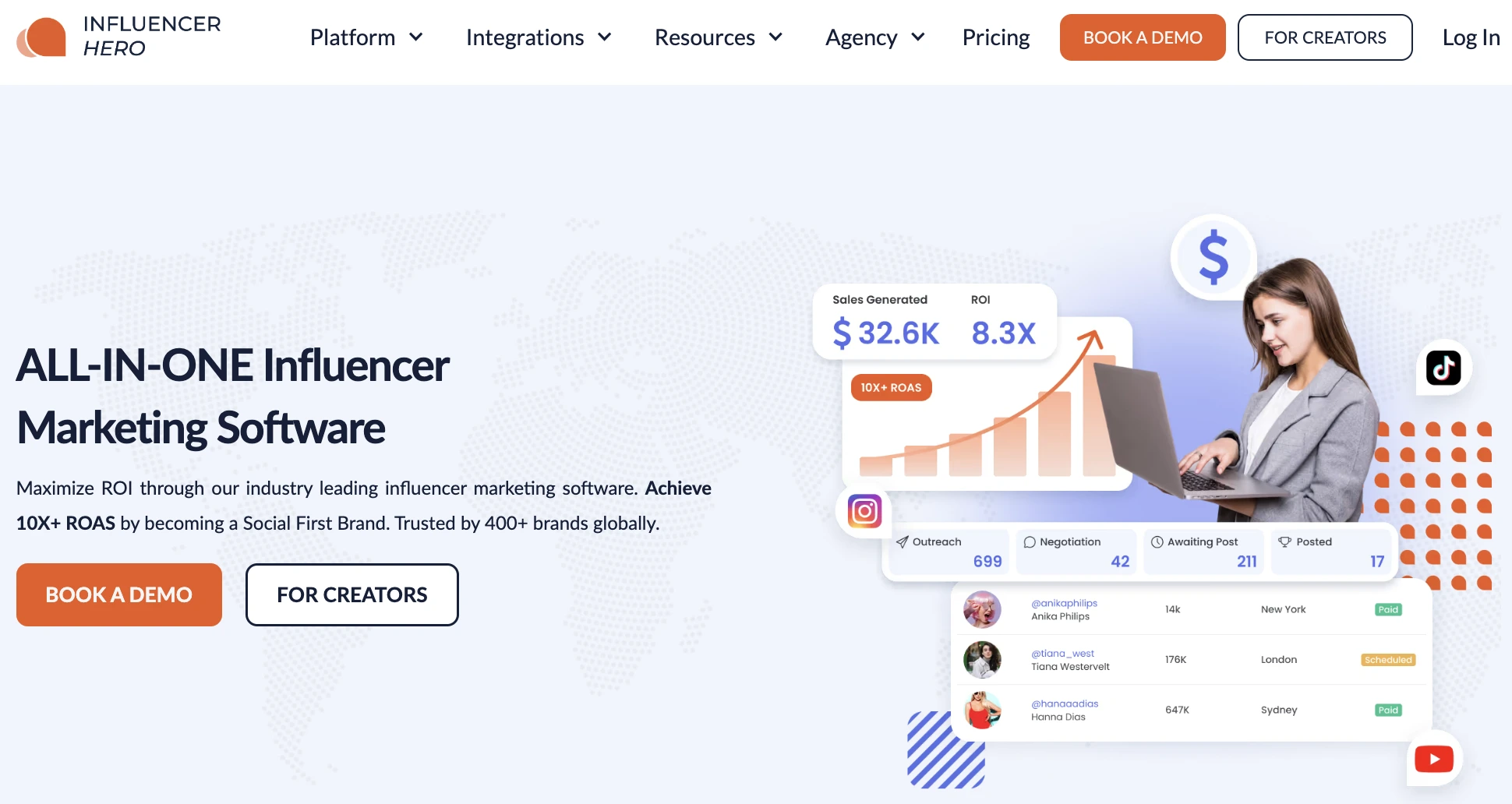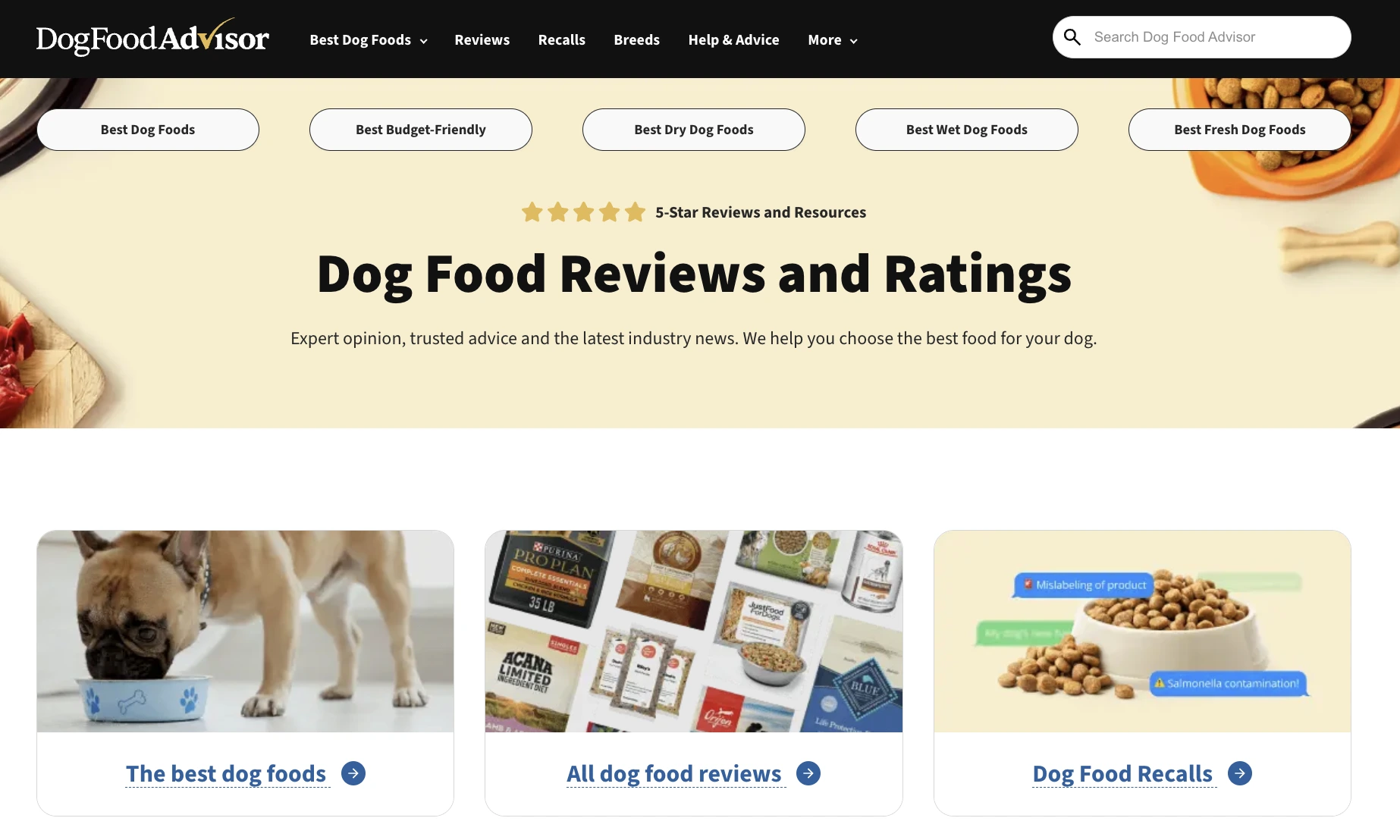





Big and small brands stepping into 2026 know for sure that a creator-driven growth strategy is worth investing in. After all, the influencer marketing industry is projected to reach $32.55 billion by the end of 2025. And around 86% of U.S. marketers estimate they will use the channel this year. So, if you’ve been planning to switch to alternative growth channels, don’t rush.
Social platforms shape customer behavior, and creators have gained even more power, evolving into powerful advisors. Performance partnerships remain one of the most cost-efficient ways to scale revenue.
But the big strategic question remains: Should your brand start with influencer marketing or launch an affiliate program first?
Although both channels can work, scale, and be highly profitable, the real answer depends on where your brand is right now. Everything matters: your goals, your product type, your budget, and the level of awareness you already have.
In this article, we are sharing a practical, decision-ready framework to help you choose the right starting point in 2026, along with real-world examples from ecommerce, DTC, and SaaS brands.
And here’s an early spoiler: Most brands benefit from starting with influencers to build trust and demand, then layering affiliates on top once awareness has been established.
Before choosing a channel, you need a clear picture of how each one works and what role it plays.
While Google AI and LLMs have been eating into brands’ organic traffic and paid ads have been eating into their budgets, influencers and creators rule the ball. They shape audience opinions and drive discovery on platforms like TikTok, Instagram, YouTube, and LinkedIn.
Additionally, brand awareness and brand trust are no longer just abstract terms in your marketing team's reports. Even your organic traffic and brand visibility depend on being mentioned by external sources. That’s why influencers are the sure path to growth. They create content that inspires, entertains, educates, and, importantly, persuades.
How to collaborate with influencers? There are many formats to choose from: sponsored posts, product reviews, long-term partnerships, UGC packages, hybrid performance deals, etc.
Most brands today also rely on influencer marketing software like Influencer Hero to manage workflows, send briefs, track deliverables, assign custom links or codes, and monitor performance in real time. These tools make it easier to coordinate campaigns at scale and understand which creators actually drive results.

So, why do you need influencer marketing? To:
Most collaborations follow a simple structure. Brands either pay a fixed fee for content, send products for creators to try and review, or build a long-term partnership where creators produce content regularly.
More and more brands are also combining these approaches and using hybrid deals, where the creator receives a base payment plus a small performance bonus tied to link clicks or sales. This model is becoming extremely popular because it motivates creators to put more effort into their content and gives brands a clearer idea of what works.
Affiliate marketing, on the other hand, relies on partners who drive traffic and conversions through tracked links or promo codes. Instead of being paid upfront, they earn a commission for each qualified sale or action, which makes this channel one of the most predictable and cost-efficient ways to grow.
Affiliates come in many forms: content creators, bloggers, review platforms, comparison sites, niche experts, newsletters, and even influencers who prefer performance-based deals. Unlike influencers, affiliates usually focus less on storytelling and more on guiding warm audiences toward a final decision.

It supports steady and measurable revenue, converts existing interest into action, improves attribution, reduces acquisition costs, and strengthens long-term performance.
While influencers shine at the top and middle of the funnel, affiliates work at the middle and bottom, where clicks turn into customers and interest turns into sales.
In short, affiliate partners boost and monetize the demand your brand already has, turning awareness into predictable growth.
Let’s compare affiliates and influencers by the core parameters:
As you see, both matter. Both are powerful. But they’re not interchangeable.
Since influencers and affiliates work at different stages of the funnel, the order in which you activate them affects how quickly you see results.
New brands usually need visibility, trust, and recognizability before performance tactics can work, so influencers often serve as the natural first step. Creators introduce your brand to the market, build the first layer of awareness, and generate the type of social proof that later helps affiliates convert more consistently.
If your brand already has an audience, solid traffic, or consistent demand, affiliate campaigns can perform well right away. And if you have both awareness and resources, you can run both channels in parallel and let influencers create demand while affiliates capture it.
Before you pick your perfect starting channel, you need clarity on what you want to achieve right now, not “in general,” but in the next half-year.
Start by writing down what you actually want to achieve in the next 6 to 12 months. Not “grow the business,” but one clear main goal.
For example, your primary goal might be to:
Do these goals resonate with your strategy? If yes, you are still at the stage where people need to hear about you and understand who you are. In this case, influencer marketing is usually the best starting point. Influencers help you explain your product, show it in context, and make your brand visible to the right audience.
However, your primary goal can also be absolutely different. For example, you might want to:
If this sounds closer to your current priorities, you are probably already beyond the “no one knows us” stage. And in this case, an affiliate program can work well from the start, or you can even start building affiliates and influencers in parallel.
And once you know your primary goal, it becomes easier to understand what to track. Be it reach, impressions, mentions, UGC volume, engagement, branded search, and overall visibility for awareness. Or clicks, trials, sign-ups, sales, average order value, commission earned, and repeat conversions for performance.
Influencers usually work better as a first step when your product needs to be noticed and understood. This applies to visual, lifestyle-oriented categories like beauty, fashion, wellness, and home goods.
These products are easier to explain through short videos, real use cases, and social proof.
For example: A bag brand releasing a new collection partners with Instagram lifestyle bloggers for daily routine videos, which spark interest much faster than written descriptions.

Affiliate campaigns perform better when the product requires research or comparison before purchase. This includes finance, SaaS, B2B services, niche tools, and other technical categories. These products are often chosen after reading reviews or comparing alternatives so that affiliates can guide users toward a decision more effectively.
Example: A content workflow tool already included in “Top content operations tools” roundups launches an affiliate program. Reviewers and niche experts who previously mentioned it in broader comparison posts now have a clear incentive to feature it more prominently and link to it more actively.

Influencer campaigns often require upfront investment, while affiliate partners get paid only when they deliver. However, the nuance many brands overlook is that affiliates still need some level of awareness to convert. Without demand and basic recognizability, affiliate links will hardly perform.
So the logic is simple:
Once you move into affiliate campaigns, you need a commission structure that works for both sides and stays within your margins.
You can start with a few simple checks:
Max commission = average profit per order minus your target CPA.
For ecommerce, commissions often sit somewhere within 20–40% of your gross margin.
For SaaS, it can be 10–30% of the first payment or a smaller recurring share spread over time.
Tools like Tapfiliate help a lot here. You can set different commission types depending on the partner type, test fixed, percentage, tiered, or recurring models, and track how each structure affects performance and profitability in real time.
This way, you don’t play a guessing game. You see which partners and commission types work, and adjust your affiliate program accordingly.
The bitter truth is that neither channel is “easy.” Yes, you or your team will have to sweat really hard to get the results. Don’t believe those telling you about “setting-and-forgetting.”
Both channels require ongoing management, just in different ways. Your starting point depends on the scope of activities your team can handle consistently.
Influencer campaigns require extensive communication and creative coordination. Your team needs to brief creators, review and approve content, negotiate deliverables, and maintain relationships over time. This work is more conversational and creative, but also more unpredictable, because every creator works differently.
Affiliate programs are often perceived as more automated, but that is not how they work in reality. Don’t believe anyone who calls it “set and forget.” You still need to onboard partners properly, explain your product to them, check their traffic quality, prevent fraud, assign the right commission tiers, and keep your best performers active.
Good affiliates do not appear out of nowhere, and poor-quality affiliates can easily hurt your performance or your brand. The work here is more systematic, more operational, but no less demanding.
So the real question is not which channel is easier to manage, but which type of work your team can do at your current stage.
When to opt for the hybrid model? A hybrid approach is the strongest option when your brand has enough awareness to attract partners and enough structure to manage both channels consistently.
In other words, if you already see demand, generate organic traffic, or have creators talking about your product, you can afford both programs (affiliate and influencer) running simultaneously.
So a hybrid setup works perfectly well when:
In practice, the hybrid model looks simple: influencers generate demand and social proof, while affiliates convert that demand into measurable, predictable revenue. Over time, these two channels reinforce each other, making your partner ecosystem stronger and more scalable. Of course, only if you have enough resources to manage them both.
In 2026, smart brands don’t choose between influencers and affiliates, because these are not competing channels; they solve different problems at different stages of the funnel. The right starting point depends on what your brand needs right now.
If you are still struggling with visibility and trust, influencers can help explain your product's value and get attention faster. If your brand has gained traction and can boast steady demand, affiliates will turn that interest into predictable, measurable revenue.
And once your brand reaches a certain level of maturity, a combined approach often becomes the strongest option, with influencers creating demand and affiliates capturing it. The clearer you understand your current stage, the easier it is to choose the starting point that will make every next step more effective.
The question isn’t “which channel is better?” It’s “which one should we start with today, so the other can scale tomorrow?”

It depends on your current stage. If your brand needs visibility, trust, and recognizability, influencers are usually the best starting point. If you already have steady demand, traffic, or brand awareness, an affiliate program can immediately turn that interest into predictable revenue.
Influencers drive awareness, trust, and demand by creating relatable content on social platforms. Affiliates convert that demand into measurable growth through tracked links and commissions. Influencers work mainly at the top and middle of the funnel, while affiliates excel in the middle and bottom.
Both can be cost-efficient, but in different ways. Influencers typically require upfront investment, while affiliates earn commissions only when they deliver results. However, affiliates still need a minimum level of demand and awareness to perform — meaning many brands still benefit from starting with influencers.
Visual, lifestyle, and impulse-driven products (beauty, fashion, wellness, home) tend to perform better with influencers first. Products that require research or comparisons (SaaS, finance, B2B tools) usually benefit from affiliates early on because review-style content helps warm users make a decision.
Yes - and for many brands, this hybrid model becomes the strongest option once awareness exists. Influencers spark interest and generate social proof, while affiliates convert that demand into scalable revenue. This combined approach works especially well for brands with some organic traction and enough team capacity to manage both.



Schedule a Demo with one of our media experts below.